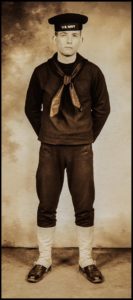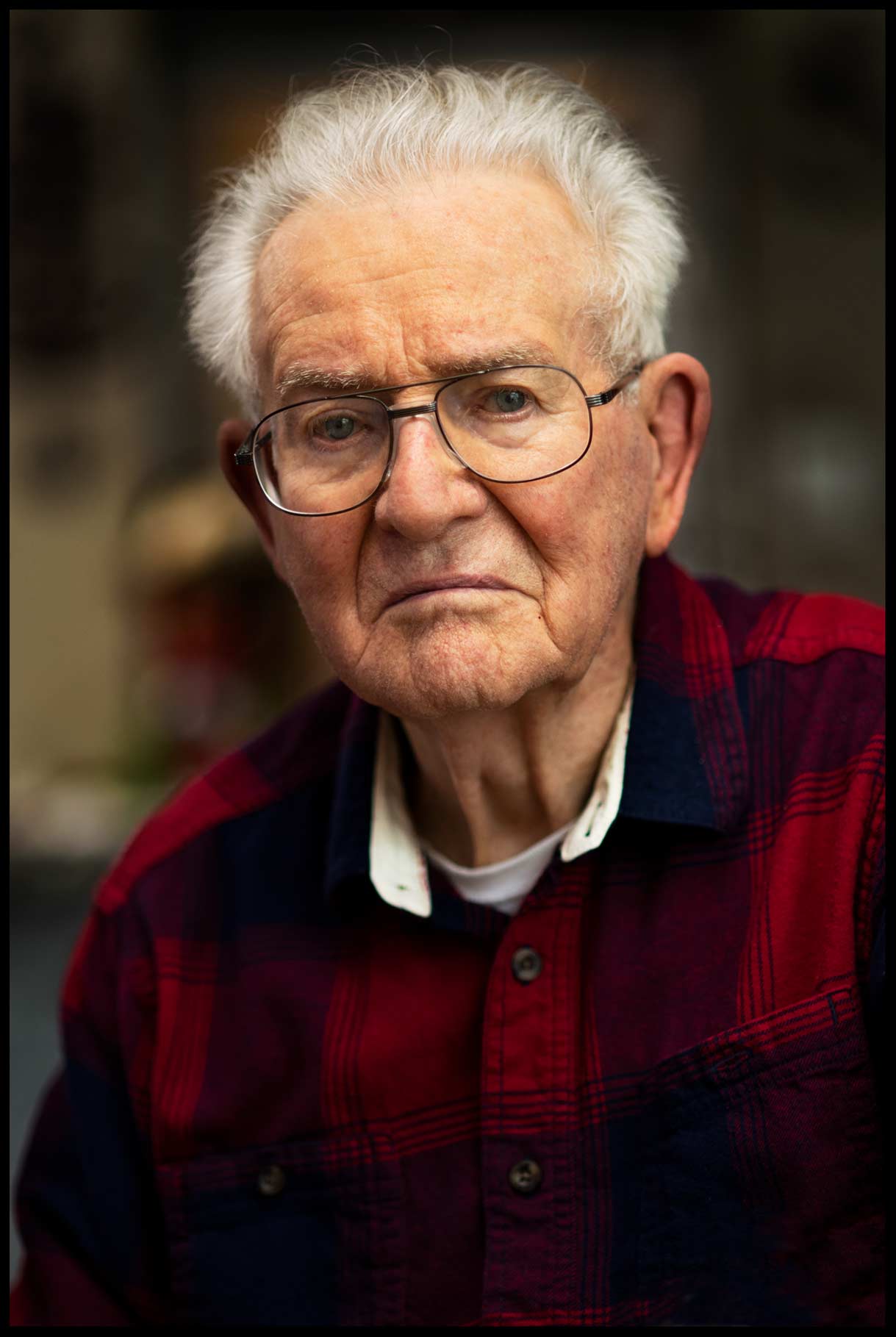Jerry Tuttle
Stationed on
USS Bache
Jerry Tuttle
PO2 U.S. Navy
1943-1945 & 1950-1952

S1c Jerry Tuttle
Great Lakes, IL, 1943
A Japanese bomber flew over and monitored kamikaze planes to see that they carried out their mission.
I was born in Brooklyn, New York in 1925. I went to high school in Freeport but didn’t finish. I joined the Navy in January, 1943 with my parents’ permission since I was 17. I finished school when I was discharged.
After boot camp they sent me to fire control school. In March, 1943 I was assigned to a destroyer—the USS Bache. We left port for the Aleutians and saw a little bit of action with the Japanese. I was in the plotting room, which was all mechanical then. We’d get radar and optical input from the director on the bow of the ship, and we’d make the inputs necessary to position the guns. We were there until June, 1943. Then we got orders to join MacArthur in New Guinea. We supported bombardments and had interactions with some Japanese destroyers trying to land troops. This was 1943 into 1944.
In October, 1944 we learned they were going to make a large-scale invasion of the Philippine Islands, heralded as MacArthur’s return. Our primary function at the Battle of Leyte Gulf was bombarding the beach. The Marines on shore gave us coordinates to place our fire. A Japanese bomber flew over and monitored kamikaze planes to see that they carried out their mission.
On October 24th we joined other ships going down to the Surigao Strait. The Japanese came through the strait and we were positioned at the mouth with battleships, cruisers and destroyers. We engaged them and they made the mistake of going up in a line and turning around. We engaged all of our guns at them. That’s called a classic Crossing the T. The squadron sank the battleship Fuso, the cruiser Mogami and the destroyer Hasegawa. As soon as we had some daylight, we assessed our situation. What was left of the Japanese Navy had retreated back through the strait. There were a lot of Japanese in the water but they wouldn’t accept any help.
We went back to Pearl Harbor and had a chance to go ashore to have some steak and eggs and fresh milk and relax a little bit. Some guys got tattoos, but I figured I’d rather have the steak than a tattoo. After that I went to advanced fire control school in Washington, D.C. I was a Fire Controlman Second Class, Petty Officer Second Class. In February, 1945 I was reassigned to another ship—the Herbert J. Thomas. They discharged me from the ship in October, 1945 and I was told to report to Staten Island, New York. I stayed there until I was discharged in March, 1946. I was still Second Class. I took the test for First Class and passed it, but my discharge occurred before any official advancement.
I joined the Navy Reserve and each year we had two weeks of active duty aboard ship. The last trip was on the Battleship Wisconsin. My duty station was helmsman on the bridge. I got to steer now and then. I was in the reserves for four years and worked at Servo Corporation as a junior designer.
I got recalled to Korea and served aboard the Alfred E. Cunningham. I did the same job as before. We patrolled the east coast of Korea, supporting shore bombardment. We were there from October, 1950 to March, 1952.
My wife and I married in 1956. and in 1960 we moved to California. I worked at Hughes Aircraft as a designer draftsman. Then I worked for Autonetics from 1962 until 1988 when I retired. I left as a senior engineer in the marine division, working on submarine navigation systems.
We came to San Antonio in 2007.
I’m glad I served. It was interesting and I was very fortunate to come home all in one piece. I had no regrets. I learned a whole lot. {12-14-2018 • San Antonio, TX}
